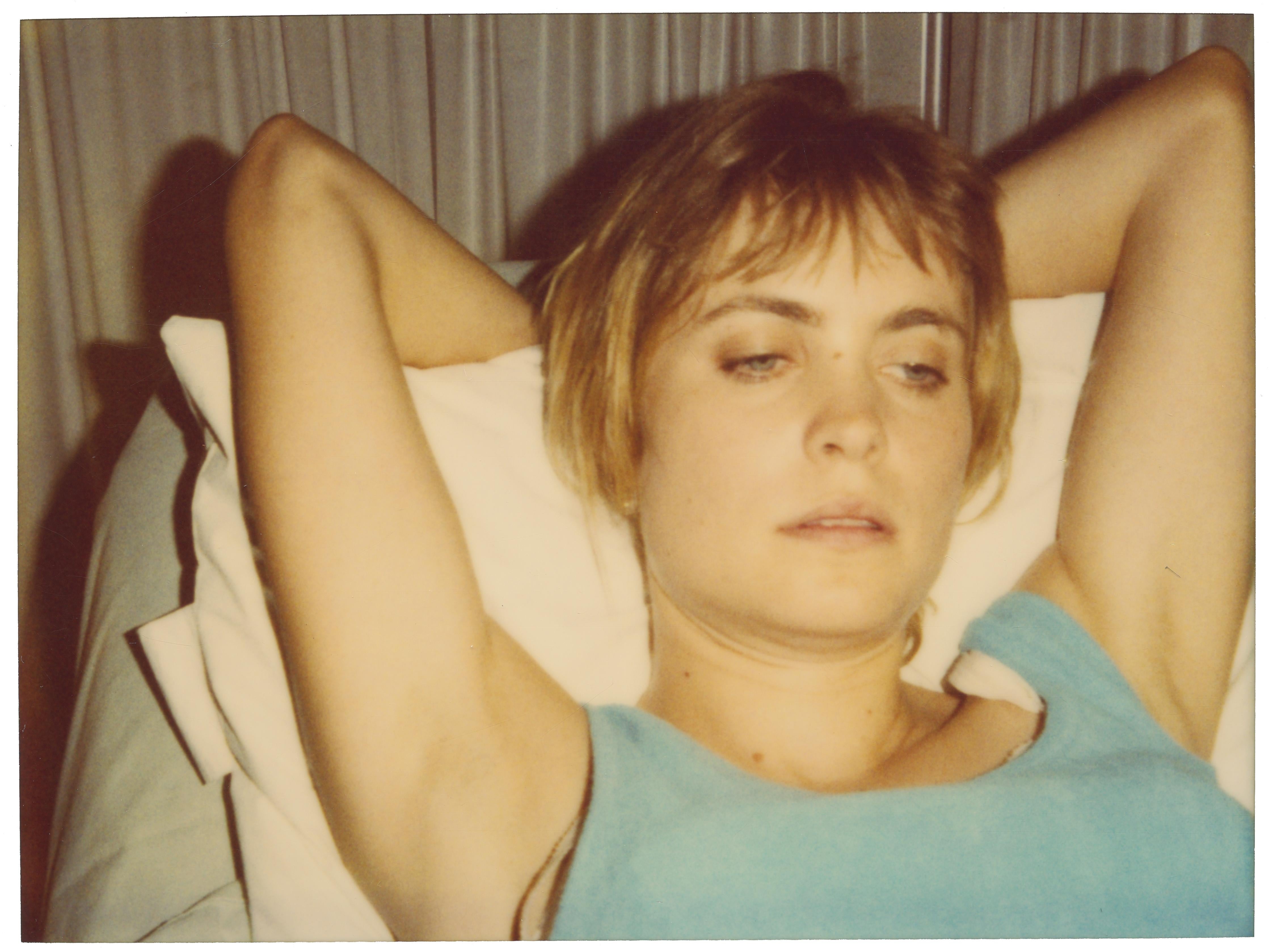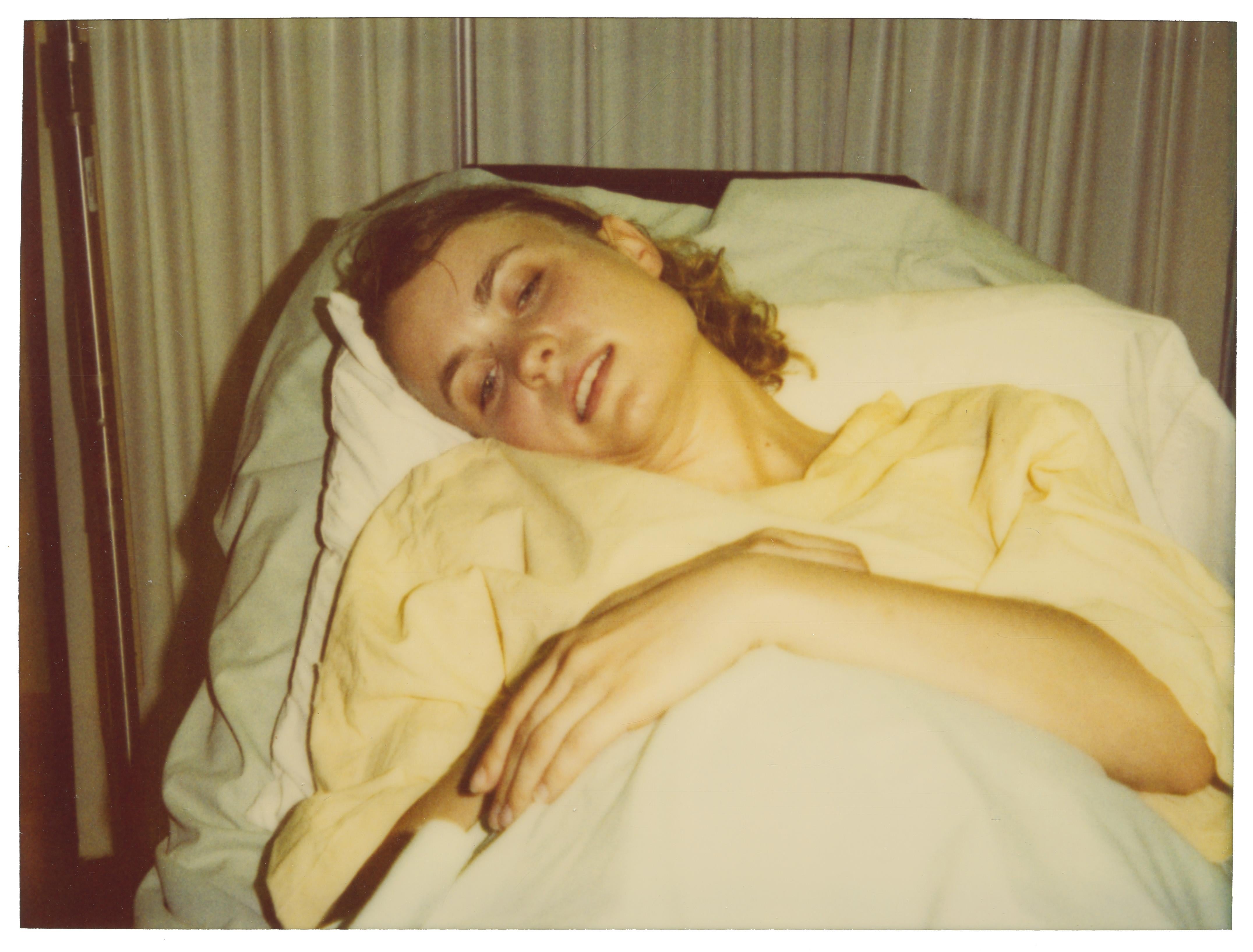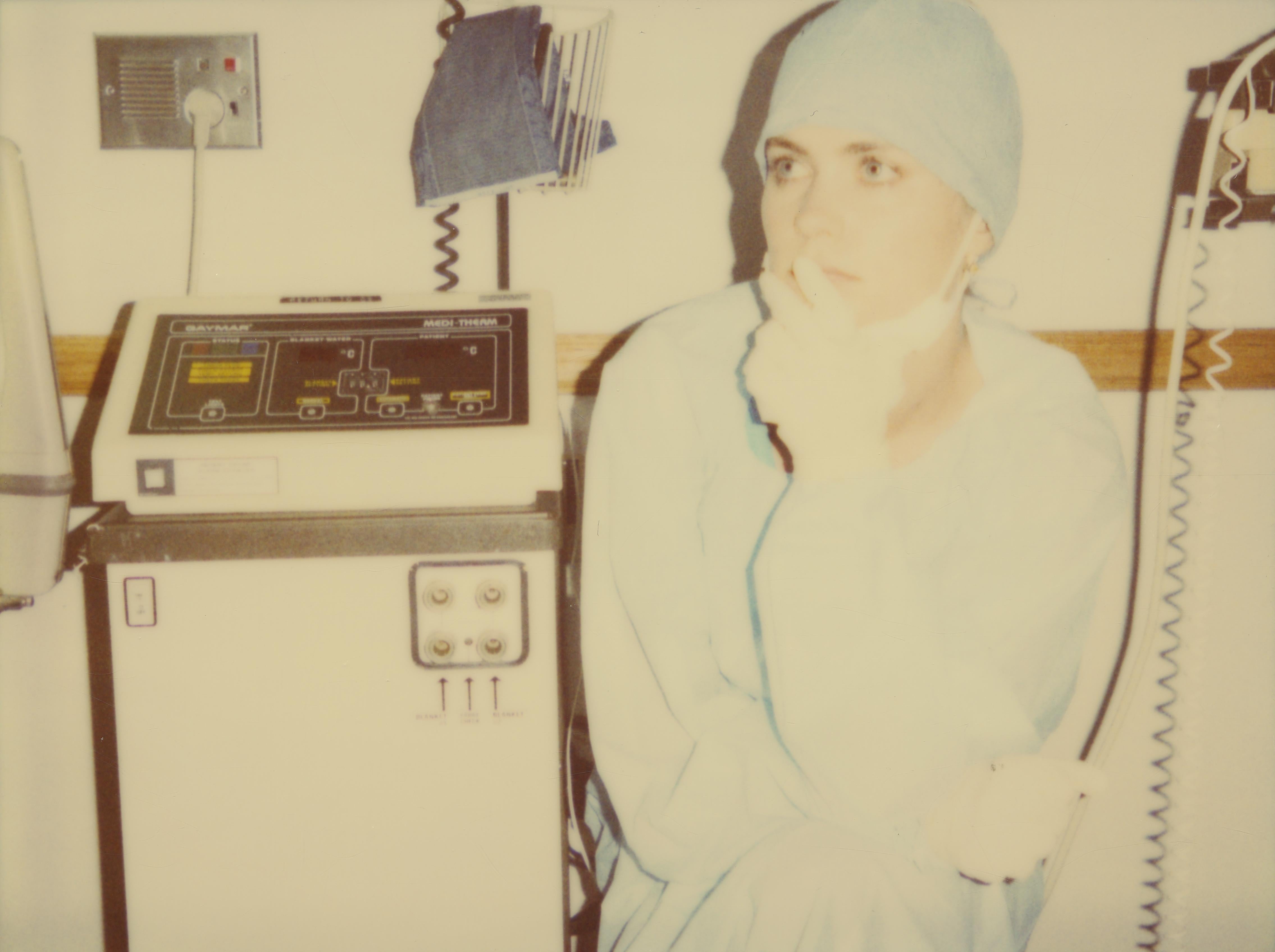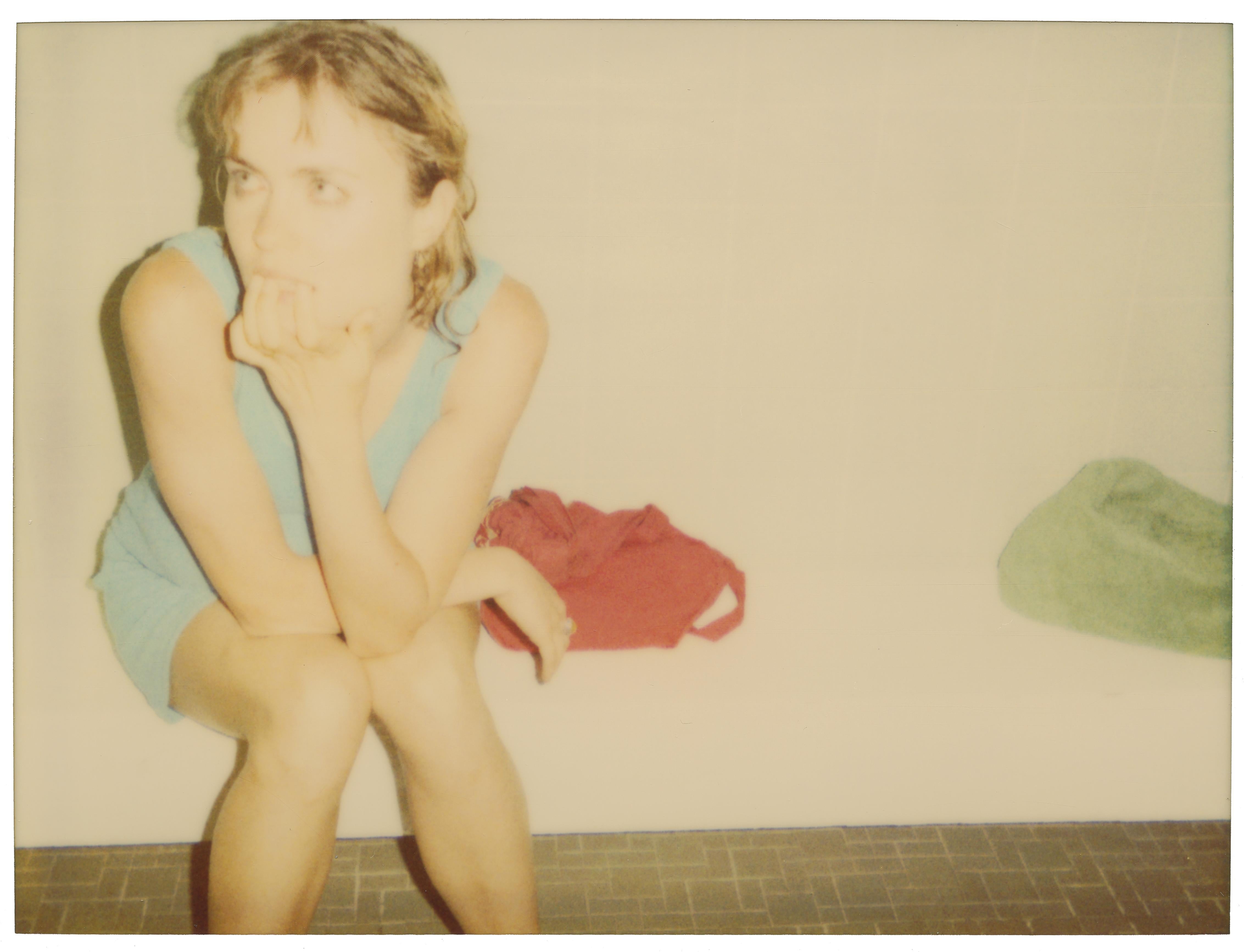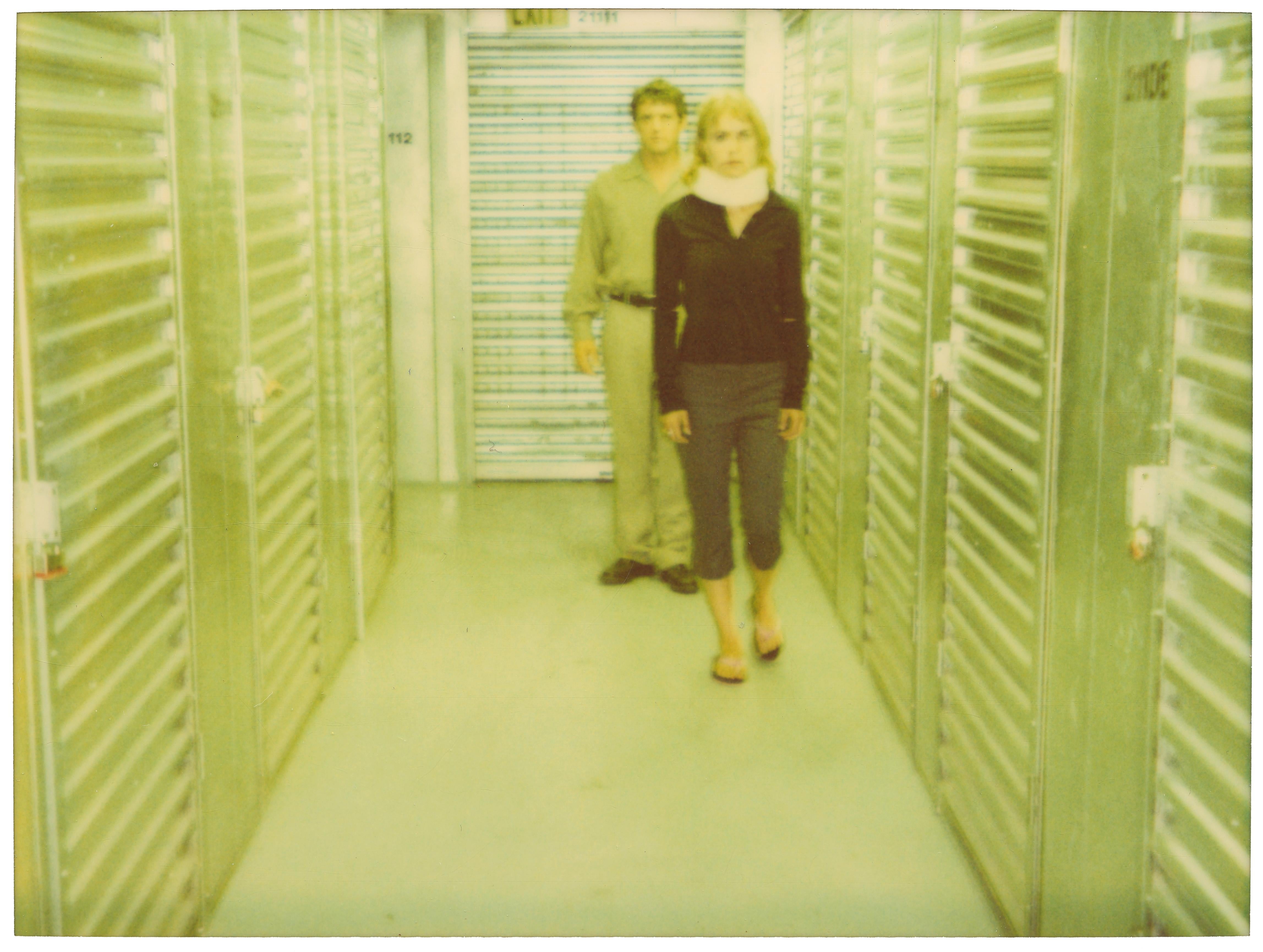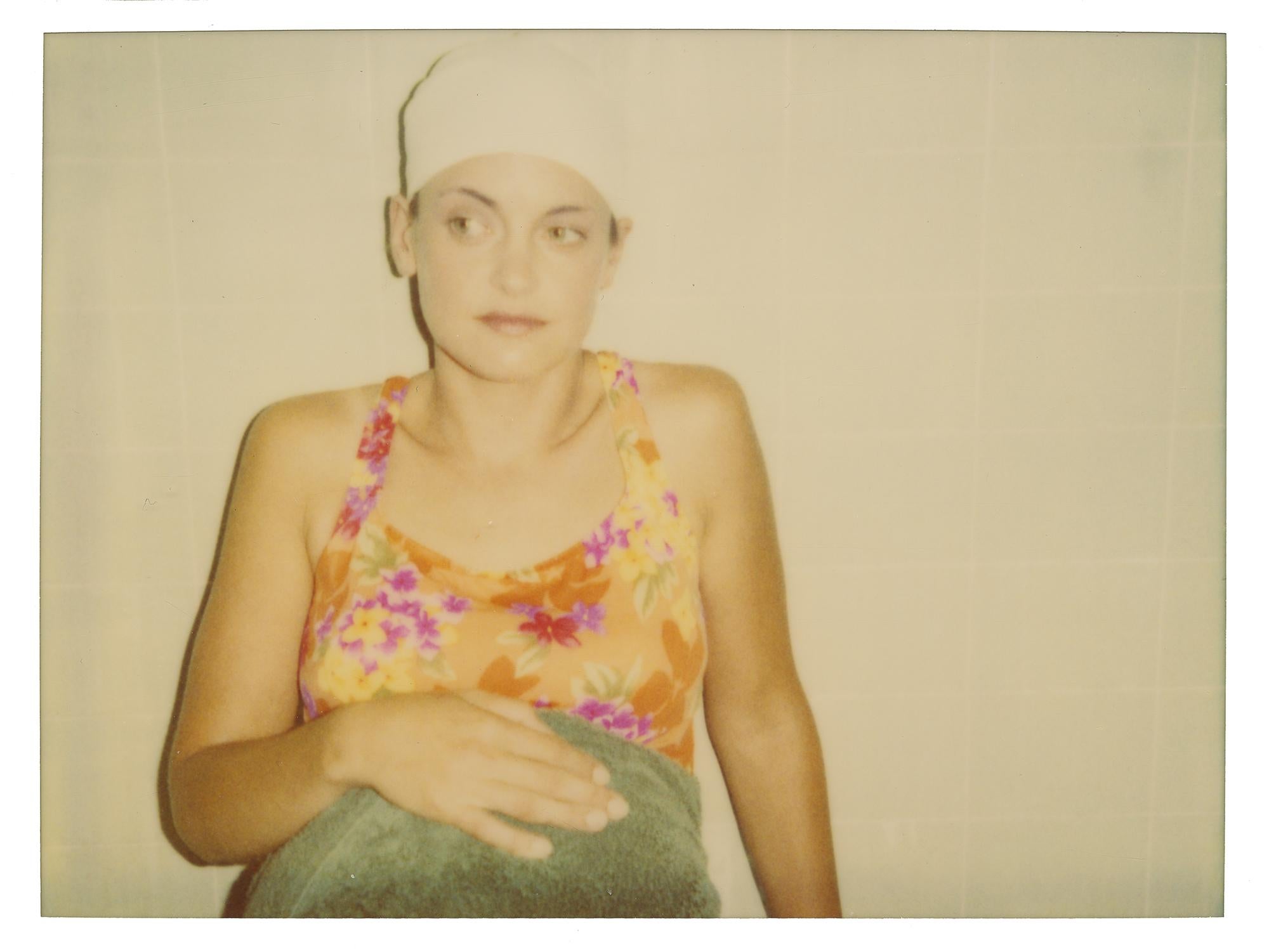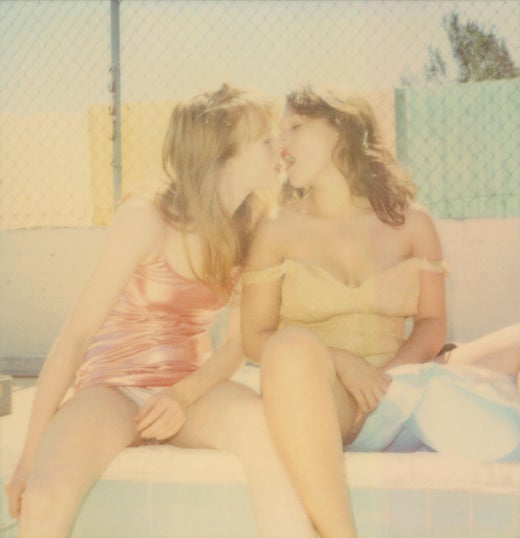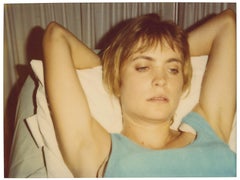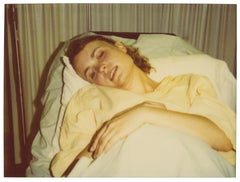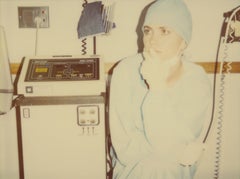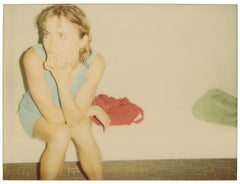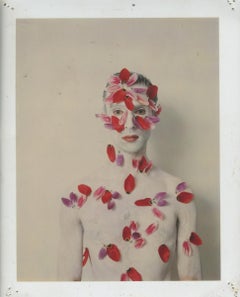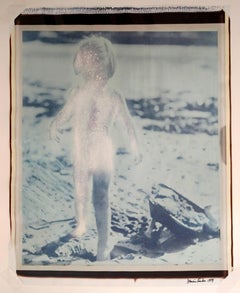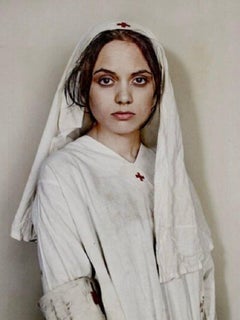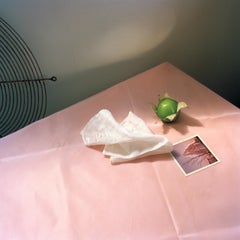Items Similar to After the Birth (Suburbia) - Contemporary, Polaroid, Analog, Color, Photography
Want more images or videos?
Request additional images or videos from the seller
1 of 5
Stefanie SchneiderAfter the Birth (Suburbia) - Contemporary, Polaroid, Analog, Color, Photography2004
2004
$800
£613.26
€701.92
CA$1,142.77
A$1,253.26
CHF 649.32
MX$15,058.95
NOK 8,173.75
SEK 7,671.30
DKK 5,244.02
About the Item
After the Birth (Suburbia) - 2004
featuring Radha Mitchell
50x60cm,
Edition of 10 plus 2 Artist Proofs.
Archival C-Print based on the Polaroid.
Signed on verso with Certificate,
Artist inventory number: 1924.
Not mounted.
This project "Suburbia" was shot on the set of Marc Forster's first feature film "Everything put Together' with Radha Mitchell, Michelle Hicks, Megan Mullally, and others.
Suburbs collectively, or the people who live in them
Suburb { a district, especially a residential one, on the edge of a city or large town }
synonyms [Outer edge, Fringes, Periphery, Limits, Outer reaches, Environs ]
Stefanie Schneider: A German view of the American West
The works of Stefanie Schneider evoke Ed Ruscha's obsession with the American experience, the richness of Georgia O'Keefe's deserts and the loneliness of Edward Hopper's haunting paintings. So how exactly did this German photographer become one of the most important artists of the American narrative of the 20th and 21st century?
Born in Germany in 1968, photographer Schneider used to divide her time between Berlin and Los Angeles from the 90's until settling permanently where her process begins in the American West, in locations such as the planes and deserts of Southern California, where she photographs her subjects. In Berlin, Schneider developed and enlarged her works by hand.
This theme of preservation and deterioration is a core part of Schneider's oeuvre. In an interview in October 2014 with Artnet, the artist explained how her own experiences of pain and loss inspire her. ''My work resembles my life: Love, lost and unrequited, leaves its mark in our lives as a senseless pain that has no place in the present.''
''The ex-lover experiences the residues of love as an amputee experiences the sensation of a ghost limb.'' - Stefanie Schneider
Schneider's subjects are often featured in apocalyptic settings: desert planes, trailer parks, oilfields, run-down motels and empty beaches, alone, or if not, not connected with one another. ''It is the tangible experience of ''absence'' that has inspired my work,'' explained Schneider.
Barnebys, May 3rd, 2017
Stefanie Schneider interviewed by Dutch Filmmaker Willem Baptist
When did you first decide to work with Polaroids? Why do Polaroids seem to be so well tuned to our (artistic) senses, perception and minds?
I started using expired Polaroid film in 1996. It has the most beautiful quality and perfectly encapsulates my vision. The colors on one hand, but then the magic moment of witnessing the image appear. Time seems to stand still, and the act of watching the image develop can be shared with the people around you. It captures a moment, which becomes the past so instantly that the decay of time is even more apparent; – it gives the image a certain sentimentality. The Polaroid moment is an original every time. An artifact.
Why use a medium from the past?
For me, analog has always been there in the present. For the new generation, analog is interesting because it's new to them. I understand that people growing up in a digital age will wonder about its usefulness, but it's theirs to recover if they want to. When I first started working with Polaroid, it wasn't the past. It was a partially forgotten medium, but it existed nonetheless. It is mine by choice as there is no substitute for tangible beauty.
Is it imperfect?
The imperfect perfection in a “wabi-sabi” kind of way.
Wabi-sabi (侘寂) represents a comprehensive Japanese world view or aesthetic centered on the acceptance of transience and imperfection. The aesthetic is sometimes described as one of beauty that is imperfect, impermanent, and incomplete.
'If an object or expression can bring about, within us, a sense of serene melancholy and a spiritual longing, then that object could be said to be wabi-sabi'. 'Wabi-sabi nurtures all that is authentic by acknowledging three simple realities: nothing lasts, nothing is finished, and nothing is perfect.'
Is the Polaroid photograph recognizable or even sometimes cliché?
Absolutely! There's something cliché about the way I'm showing the American Dream. I live it myself, trying to find perfection in an imperfect world. Reaching for the horizon. The dream is broken; the cliché tumbles. There are different ways to involve an audience. You could make movies like Harmony Korine's 'Gummo' a masterpiece in my view but which would probably estrange a large part of an audience. A certain film education is a prerequisite. Or you can start with clichés, the audience then feels safe, which lures them into the depth of your world without them even knowing it or understanding where exactly they are being led to. Appealing to emotions and the sub-conscious. Normal, Change, New Normal.
You continually revisit the landscape of the American West in your work. What draws you back to this scene?
Southern California represents a dream to me. The contrast of Northern Germany, where I grew up, to the endless sunshine of Los Angeles was what first attracted me. The American West is my dream of choice. Wide, open spaces give perspectives that articulate emotions and desires. Isolation feeds feelings of freedom or sometimes the pondering of your past. The High Desert of 29 Palms has very clear and vivid light, which is vital. Expired Polaroid film produces 'imperfections' that I would argue mirrors the decline of the American dream. These so called 'imperfections' illustrate the reality of that dream turning into a nightmare. The disintegration of Western society.
Are you playing with the temporality of the material and the value of the moment itself?
The value of the moment is paramount, for it is that moment that you're trying to transform. All material is temporary, it's relative, and time is forever.
Why does analog film feel more pure and intuitive?
It's tangible and bright and represents a single moment.
The digital moment may stay in the box (the hard drive / camera / computer etc.)
forever, never to be touched, or put into a photo album, sent in a letter, or hung on a wall.
Printing makes it an accomplishment.
The analog world is more selective because it's real. Film is a choice.
The digital worldwide clicking destroys this moment. The generation without memories due to information overload and hard drive failures. Photo albums are a thing of the past.
Why does it feel this way?
That's how the human instinct works.
When I was a child, every picture been taken was a special moment. Analog photographic film as well as Super-8 material were expensive treasures. My family's memories were created by choosing certain moments in time. There was an effort behind the picture. The roll of film might wait months inside the camera before it was all used. From there, the film required developing, which took more time, and finally, when the photos were picked up from the shop, the memories were visited again together as a family. Who knew then, how fleeting these times were. Shared memories was a ritual.
What's your philosophy behind the art of Polaroid pictures?
The 'obsolete' is anything but obsolete. Things are not always as they appear, and there are hidden messages. Our memories and our dreams are under-valued. It is there that real learning and understanding begins by opening yourself to different perspectives. Who we are and where we come from is important. A Polaroid is a testimony to our existence. But our time is fading fast.
What inspired you to use stop motion cinematography?
My work has always resembled movie stills. I remember the first time I brought a box of Polaroids and slid them onto Susanne Vielmetter's desk (my first gallery). Instantly, it became apparent that there was a story to tell. The stories grew. It was undeniable to me, that the emerging story was where I was destined to go. I've made four short films before my latest feature film, The Girl behind the White Picket Fence. This film is 60 minutes long with over 4000 edited Polaroids. Remember that our sub-conscious fills in blanks, the parts missing from the story between photograph stills allow a deeper and more personal experience for the viewer. That is, if you surrender yourself and trust me as the director to lead you somewhere you might not have ever been before.
Why do you think it is important to own art?
'We have art in order not to die of the truth'
Nietzsche
- Creator:Stefanie Schneider (1968, German)
- Creation Year:2004
- Dimensions:Height: 19.69 in (50 cm)Width: 23.63 in (60 cm)Depth: 0.04 in (1 mm)
- More Editions & Sizes:20x24cm, Edition of 10 plus 2 Artist Proofs.Price: $380
- Medium:
- Movement & Style:
- Period:
- Framing:Framing Options Available
- Condition:
- Gallery Location:Morongo Valley, CA
- Reference Number:1stDibs: LU652313425682
Stefanie Schneider
Stefanie Schneider received her MFA in Communication Design at the Folkwang Schule Essen, Germany. Her work has been shown at the Museum for Photography, Braunschweig, Museum für Kommunikation, Berlin, the Institut für Neue Medien, Frankfurt, the Nassauischer Kunstverein, Wiesbaden, Kunstverein Bielefeld, Museum für Moderne Kunst Passau, Les Rencontres d'Arles, Foto -Triennale Esslingen., Bombay Beach Biennale 2018, 2019.
About the Seller
4.9
Platinum Seller
Premium sellers with a 4.7+ rating and 24-hour response times
Established in 1996
1stDibs seller since 2017
1,047 sales on 1stDibs
Typical response time: 1 hour
- ShippingRetrieving quote...Shipping from: Morongo Valley, CA
- Return Policy
Authenticity Guarantee
In the unlikely event there’s an issue with an item’s authenticity, contact us within 1 year for a full refund. DetailsMoney-Back Guarantee
If your item is not as described, is damaged in transit, or does not arrive, contact us within 7 days for a full refund. Details24-Hour Cancellation
You have a 24-hour grace period in which to reconsider your purchase, with no questions asked.Vetted Professional Sellers
Our world-class sellers must adhere to strict standards for service and quality, maintaining the integrity of our listings.Price-Match Guarantee
If you find that a seller listed the same item for a lower price elsewhere, we’ll match it.Trusted Global Delivery
Our best-in-class carrier network provides specialized shipping options worldwide, including custom delivery.More From This Seller
View AllAngie (Suburbia) - Contemporary, Polaroid, Analog, Portrait
By Stefanie Schneider
Located in Morongo Valley, CA
Angie (Suburbia) featuring Aussie actress Radha Michell - 2004
38x50cm,
Edition of 10 plus 2 Artist Proofs.
Archival C-Print based on the Polaroid.
Signature label with Certifica...
Category
Early 2000s Contemporary Portrait Photography
Materials
Archival Paper, Photographic Paper, C Print, Color, Polaroid
Due Date II (Suburbia) - with Radha Mitchell - Contemporary, Polaroid
By Stefanie Schneider
Located in Morongo Valley, CA
Due Date II (Suburbia) - 2004,
28x37cm,
Edition of 10 plus 2 Artist Proofs.
Archival C-Print, based on the Polaroid.
Certificate and Signature label.
Artist Inventory #1666.
Not mounted.
The project "Suburbia" was shot on the set of Marc Forster's first feature film 'Everything put Together' with Radha Mitchell, Michelle Hicks, Megan Mullally, Catherine Lloyd Burns, Matt Malloy and others.
Suburbs collectively, or the people who live in them
Suburb { a district, especially a residential one, on the edge of a city or large town }
synonyms [Outer edge , Fringes, Periphery, Limits, Outer reaches, Environs ]
Sunday in suburbia, a summer's day heavy with heat, hardly a soul to be seen. As a result, the motifs of Stefanie Schneider's “Suburbia” cycle – put together in California, in the very west of the USA – are virtually inconspicuous.Schneider's camera encircles an idyllic American setting, capturing a garden practically empty of people. Surrounded by a white picket fence, flowers and trees bloom profusely in the blazing sunlight. The day is empty and quiet like only a Sunday can be. The grass is perfectly cut, the garden well tended, the inhabitants oblivious to everything and lethargic. An instant is seized, revealing the tragedy of an average, unsuccessful, middle class life.
The scene is familiar from countless movies and American literature; the perfect façade of an American ideal, which seems to conceal the horror of daily life. In David Lynch's „Blue Velvet“ the film begins with the camera rolling over a similar setting: the view over the fence, the painstakingly neatly cut lawn, ending with a close-up: a cut-off ear covered with feasting ants.
Stefanie Schneider overdoes it, she exaggerates: this is confirmed by the irritating colourfulness as well as the vehemence of the motifs. Emptiness stands in stark contrast to the beauty of the blooming roses or the lush growth of the trees. The fenced, idyllic summer scene appears vacant; unused chairs surround a table, the grill untouched and clean, no object out of place. It is only the inhabitants who appear curiously lost. Schneider shows them in the middle of their saturated lives, in well-tended averageness, which can only be endured with a Martini on ice, on hand before lunch. In her opinion the scenes are banal, yet one becomes witness to great intimacy.
Schneider's „Suburbia“ cycle lives from the interplay of the motifs, and tells a story with the same flavour as American author Raymond Carver...
Category
Early 2000s Contemporary Figurative Photography
Materials
Archival Paper, Photographic Paper, C Print, Color, Polaroid
Untitled (Suburbia) - Contemporary, Polaroid, Analog, Photography
By Stefanie Schneider
Located in Morongo Valley, CA
Untitled (Suburbia) - 2004
featuring actress Radha Mitchell
20x24cm,
Edition of 10 plus 2 Artist proofs.
Archival C-Print based on the Polaroid,
Signed on verso with Certificate...
Category
Early 2000s Contemporary Portrait Photography
Materials
Archival Paper, Photographic Paper, C Print, Color, Polaroid
Lonesome (Suburbia) - Contemporary, Polaroid, Analog, Color, Photography
By Stefanie Schneider
Located in Morongo Valley, CA
Lonesome (Suburbia) - 2004
40x50cm,
Edition of 10,
Archival C-Print based on a Polaroid,
Signed on verso with Certificate,
Artist inventory number: 1742.
Not mounted.
In an ag...
Category
Early 2000s Contemporary Portrait Photography
Materials
Archival Paper, Photographic Paper, C Print, Color, Polaroid
After the Accident (Suburbia) - Contemporary, Polaroid, Analog, Photography
By Stefanie Schneider
Located in Morongo Valley, CA
After the Accident (Suburbia) - 2004
20x24cm,
Edition of 10,
Archival C-Print based on the Polaroid,
Signed on verso with Certificate,
Artist inventory number: 1668.
Not mounte...
Category
Early 2000s Contemporary Portrait Photography
Materials
Archival Paper, Photographic Paper, C Print, Color, Polaroid
Jean 3 (Suburbia) - Contemporary, Polaroid, Analog, Color, Photography, Portrait
By Stefanie Schneider
Located in Morongo Valley, CA
Jean III (Suburbia) 2004,
20x24cm, Edition of 1/10,
digital C-Print based on a Polaroid,
Signature label with Certificate.
Artist Inventory No. 1688.01.
Not mounted.
This project ...
Category
Early 2000s Contemporary Portrait Photography
Materials
Archival Paper, Photographic Paper, C Print, Color, Polaroid
You May Also Like
Untitled Polaroid 23, Unique Self Portrait Photograph by Dietmar Busse
By Dietmar Busse
Located in New York, NY
Untitled Polaroid 23, Unique Self Portrait Photograph by Dietmar Busse.
2001
Signed and dated in black ink, verso
Polaroid (Unique)
5 x 4 inches, image
Contact gallery for price.
Category
Early 2000s Contemporary Photography
Materials
Polaroid
Large Format Vintage Color 20X24 Polaroid "Radiant Child" signed and dated
By Dennis Farber
Located in Surfside, FL
30X26 with Mat. (20X24 inch polaroid) From The New York Times: Dennis Farber abducts children from photographic illustrations in children's books of the 30's. He paints Ku Klux Klan costumes on some toddlers at a birthday party, as if he could see their character and future by the light of the birthday candles...
Category
1980s Figurative Photography
Materials
Photographic Paper
Schwester Ludmilla Nurse Photography on Dibond with Perspex Front UV Resistant
By Billy & Hells
Located in Utrecht, NL
Schwester Ludmilla Nurse Photography on Dibond with Perspex Front UV Resistant
Billy und Hells are two photographers: Anke Linz (Nürnberg, 1965) and Andreas Oettinger (Munich, 1963)...
Category
21st Century and Contemporary Contemporary Color Photography
Materials
Lambda
A Soft Unconscious Mourning
By Meg Griffiths
Located in Sante Fe, NM
Somewhere within and without, attempts to subtly shift and deconstruct the ways in which we engage with space, time and perception in the aftermath of trauma, such as the birth of a ...
Category
2010s Contemporary Color Photography
Materials
Archival Pigment
Expired_14_2020 - Photograph by Serena Zeppilli
Located in Roma, IT
This photograph Expired_14_2020 was taken by the Italian photographer Serena Zeppilli.
It is part of the series "I was looking for something that I...
Category
21st Century and Contemporary Contemporary Figurative Photography
Materials
Photographic Paper
Seasons 1981 Photo Color Copier Print Photograph Museum Collected Art Xerography
By Leslie Schiff
Located in Surfside, FL
SEASONS (1981)
This is for the single print listed here. (not the outside folder or title sheet)
Title: Flowers in Hand. This one is hand signed and dated verso.
Seasons explores the seasons of Man, Woman, Child, Civilization, Nature and Technology. First digital artwork purchased by the Metropolitan Museum.
Date: 1980-1981
Medium: vintage color photocopy print.
“I worked at The Metropolitan Museum in 1981, when they acquired [Lesley’s] SEASONS portfolio.
We knew we wanted it, even though we didn’t have a category for it.” David Kiehl, Curator of Prints and Special Collections The Whitney Museum of American Art, New York City.
Lesley Schiff (born 1951) is an American fine artist. Schiff studied painting at the Art Institute Chicago before developing her signature practice using color laser printers to create images. Her work is included in the collections of the Whitney Museum of American Art, the Mead Art Museum and the Metropolitan Museum of Art and other major museums, corporate and private collections globally. Lesley Schiff revolutionized the photocopier from being an office tool to just another instrument in the artist's arsenal. Rather than addressing the tool in her work, Schiff instead uses the photocopier like a paintbrush to realize her vision. Once a painter, Schiff says: “I never intended to stop painting. I just decided to start painting with a modern tool. Working with the color laser printer keeps you in your culture. It's like America. Plugged in. Electronic. Direct." Painting with light, Schiff's body of work outlines a cycle of life: man, woman, child, civilization, nature, technology. More recent works challenge the viewer to understand the concept of eye-levels and perspectives, reinventing the way we see. Schiff's work was the Metropolitan Museum of Art's first digital acquisition, and most recently, was featured at the Whitney Museum of American Art in "Experiments in Electrostatics".
She uses a color laser printer “like a paintbrush” to create her art. She has said about her work and her tool: “I never intended to stop painting. I just decided to start painting with a modern tool. Working with the color laser printer keeps you in your culture. It's like America. Plugged in. Electronic. Direct—but no matter how hi-tech my tools become, I’m a painter, but instead of painting with oils, I paint with light.
The Whitney Museum will show Lesley Schiff's pioneering SEASONS portfolio in its entirety. Many prominent collections acquired SEASONS as their first digital artwork.
She participated in the Punk Art show in the 1970's. Her work kind of relates to Fluxus and Dada.
Leslie Schiff moved from Chicago to New York in the early 1970s. Much of her art involves collage and the Xerox photocopy machine. Her images are rooted in her personal psyche and have an intuitive meaning that is not always easily understood. In exhibitions, Xerox sheets are combined and displayed decoratively on the wall. Schiff has also created books; and made video and sound tapes. She was included in the seminal New York/New Wave 1981 exhibition show at MoMA PS1 along with Jean-Michel Basquiat, William S.Burroughs, David Byrne, Larry Clark, Crash (John Matos), Ronnie Cutrone, Brian Eno, Nan Goldin, Keith Haring, Ray Johnson, Joseph Kosuth, Robert Mapplethorpe, Kenny Scharf, Steven Sprouse, Andy Warhol and Lawrence Weiner.
She did a “visual biography,” comprised of portraits of Bob Dylan—depicted at different ages, from his 20s to his 60s—illustrations of his lyrics, and images of iconic objects like his sunglasses and harmonica. Schiff collaborated with Matthew Carter...
Category
1980s Contemporary Color Photography
Materials
Color
More Ways To Browse
Frida Kahlo Self Portrait
Gentlemen Prefer Blondes
Jessica Lange
Pinup Art
Vintage Jane Russell
Alec Byrne
Andy Warhol Self Portrait
Jimi Hendrix Gered Mankowitz
Jimi Hendrix Guitar
Marilyn Monroe The Seven Year Itch
Portrait Of Leonardo
Vintage Nabokov
Goldie Hawn
Johnny Depp Art
Marilyn Monroe 1953
Mia Farrow
Monocled Miss
Slim Aarons Monocled Miss
